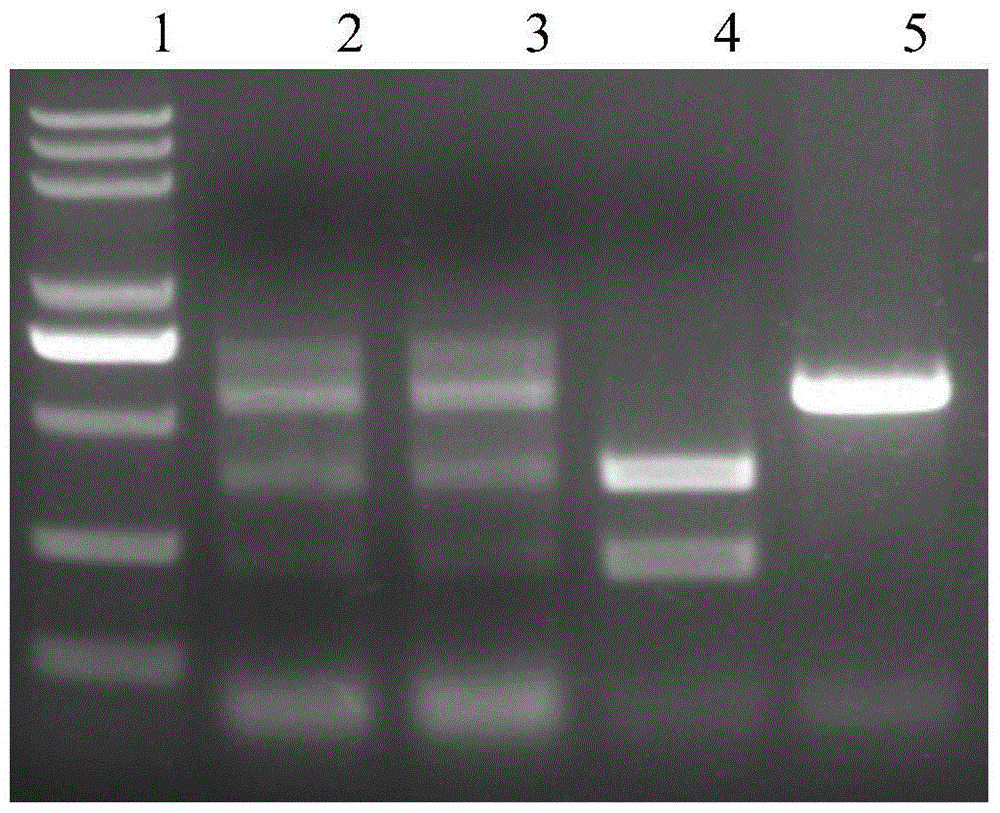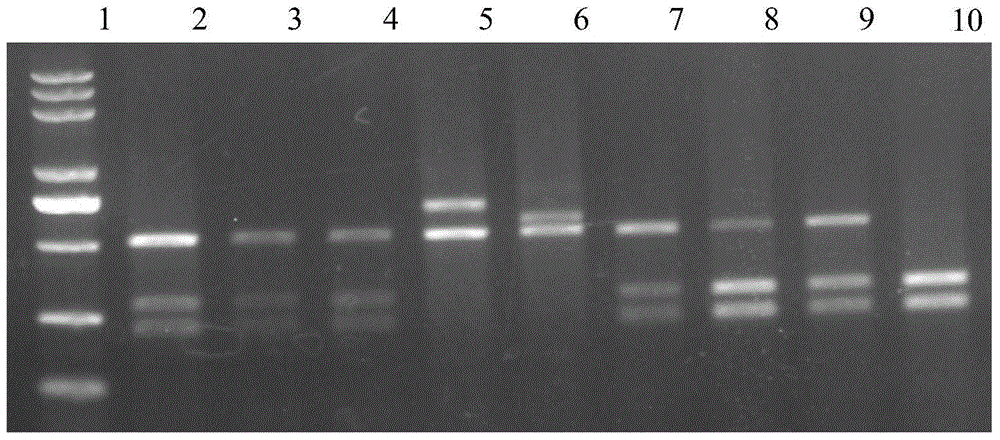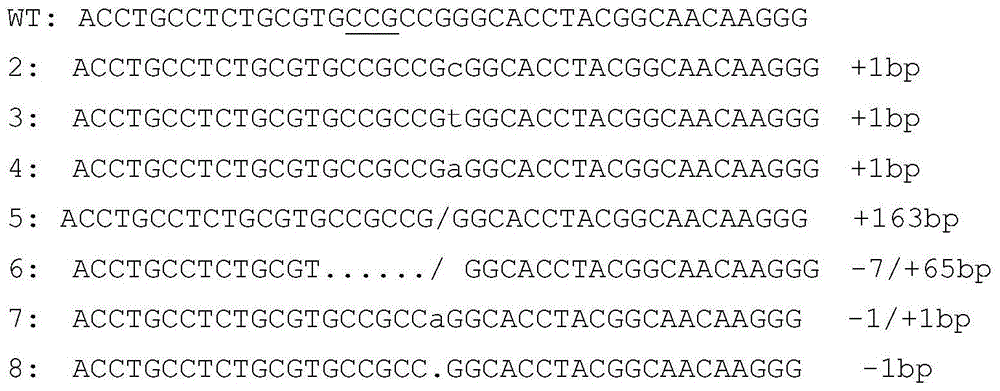Method for fixed-point transformation of plants by virtue of gene transient expression
A technology of transient expression and fixed-point transformation, applied in the field of plant genetic engineering, can solve the problems of difficult genome transformation and inability to play its role, and achieve the effect of improving regeneration ability and high biological safety
- Summary
- Abstract
- Description
- Claims
- Application Information
AI Technical Summary
Problems solved by technology
Method used
Image
Examples
Embodiment 1
[0072] Example 1. Obtaining non-transgenic tagasr mutants by transiently expressing CRISPR / Cas9 nuclease using the particle gun method
[0073] 1. Design of target site target-C5
[0074] Target-C5: 5'- CCG CCGGGCACCTACGGCAAC-3'; (No. 248-268 in the TaGASR7 gene shown in GenbankNo.EU095332)
[0075] 2. Preparation of pTaU6-gRNA plasmid containing C5 nucleotide fragment
[0076] C5 is the coding DNA of RNA that can complementarily bind to target-C5.
[0077] The following single-stranded oligonucleotides were synthesized with cohesive ends (underlined):
[0078] C5F: 5'- CTTG TTGCCGTAGGTGCCCGG-3';
[0079] C5R: 5'- AAAC CCGGGCACCTACGGCAA-3'.
[0080] After the oligonucleotide annealing procedure, a double-stranded DNA with cohesive ends was formed and inserted between the two BbsI restriction sites of the pTaU6-gRNA plasmid to obtain a pTaU6-gRNA plasmid containing C5. The positive plasmid was verified by sequencing. That is, the recombinant plasmid obtained after th...
Embodiment 2
[0126] Example 2, the use of particle gun method to transiently express TELEN nuclease to obtain heritable and non-transgenic Tamlo mutants
[0127] 1. Site-directed editing of wheat MLO gene by transient expression of T-MLO by gene gun method
[0128] The TELEN plasmid is a T-MLO vector, which can express a pair of TALEN proteins, and the TALEN proteins are composed of a DNA binding domain and a FokI domain that can recognize and bind to a target site. The target sites are:
[0129] TaMLO-A gene: TCGCTGCTGCTCGCCGTcacgca ggacc caatctcCGGGATATGCATCTCCCA;
[0130] TaMLO-B gene: TCGCTGCTGCTCGCCGTgacgca ggacc ccatctcCGGGATATGCATCTCCGA;
[0131] TaMLO-D gene: TCGCTGCTGCTCGCCGTgacgca ggacc caatctcCGGGATATGCATCTCCGA.
[0132] Wherein, the underlined part is the recognition sequence of the restriction endonuclease AvaII.
[0133] (1) Get the immature embryos of wheat variety Bobwhite and carry out hyperosmotic treatment with hyperosmotic medium for 4 hours;
[0134] (2) Use a ...
Embodiment 3
[0156] Example 3. Further verification of the gene editing method based on transient expression
[0157] The gene editing method of the present invention was further tested using 5 different wheat genes as targets.
[0158] First, edited the 1 Three homologous genes of TaGASR7 (TaGASR7-A1, TaGASR7-B1 and TaGASR7-D1). Each of the three homologous genes has three exons and two introns ( Figure 9 b). Design sgRNA targeting exon 3 because this exon is highly conserved. After initial testing of nuclease activity in protoplasts 2 , the most efficient sgRNA expression cassette (Table 5) combined with Cas9 in a single construct (pGE-TaGASR7, Figure 9 d). It was introduced into the immature embryos of two common wheat varieties (Bobwhite and Kenong199) by gene gun. Embryogenic callus appeared at 2 weeks, and a large number of seedlings (2-3 cm in height) regenerated from the callus at 4-6 weeks. Contrary to most genome editing experiments in plants, transgenic plants were sel...
PUM
| Property | Measurement | Unit |
|---|---|---|
| particle diameter | aaaaa | aaaaa |
Abstract
Description
Claims
Application Information
 Login to View More
Login to View More - R&D
- Intellectual Property
- Life Sciences
- Materials
- Tech Scout
- Unparalleled Data Quality
- Higher Quality Content
- 60% Fewer Hallucinations
Browse by: Latest US Patents, China's latest patents, Technical Efficacy Thesaurus, Application Domain, Technology Topic, Popular Technical Reports.
© 2025 PatSnap. All rights reserved.Legal|Privacy policy|Modern Slavery Act Transparency Statement|Sitemap|About US| Contact US: help@patsnap.com



